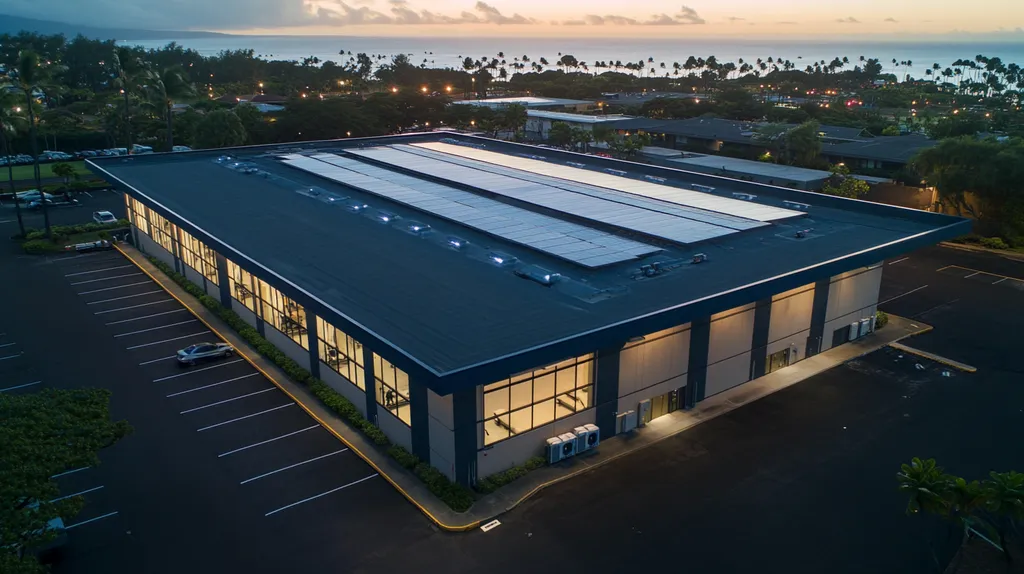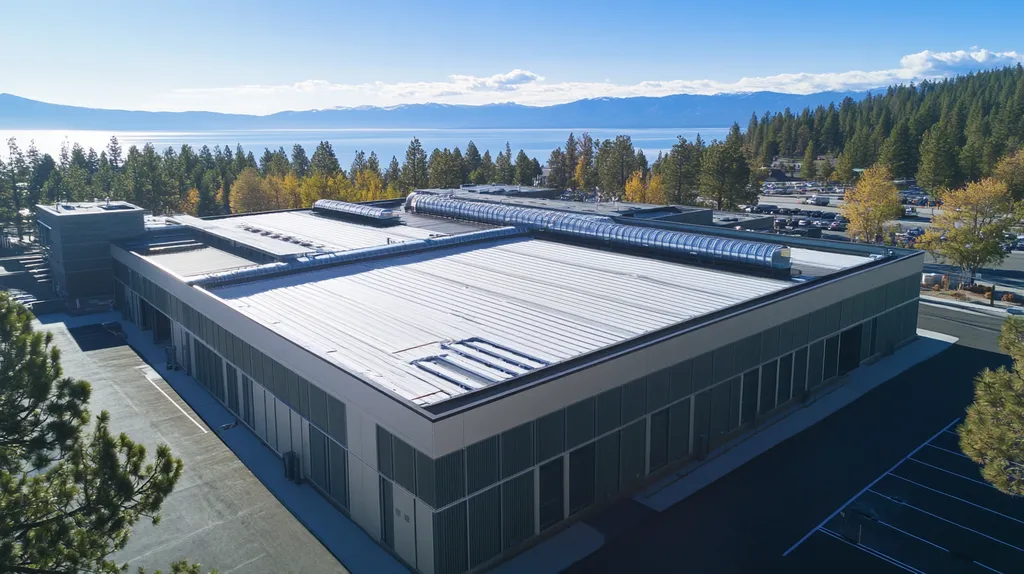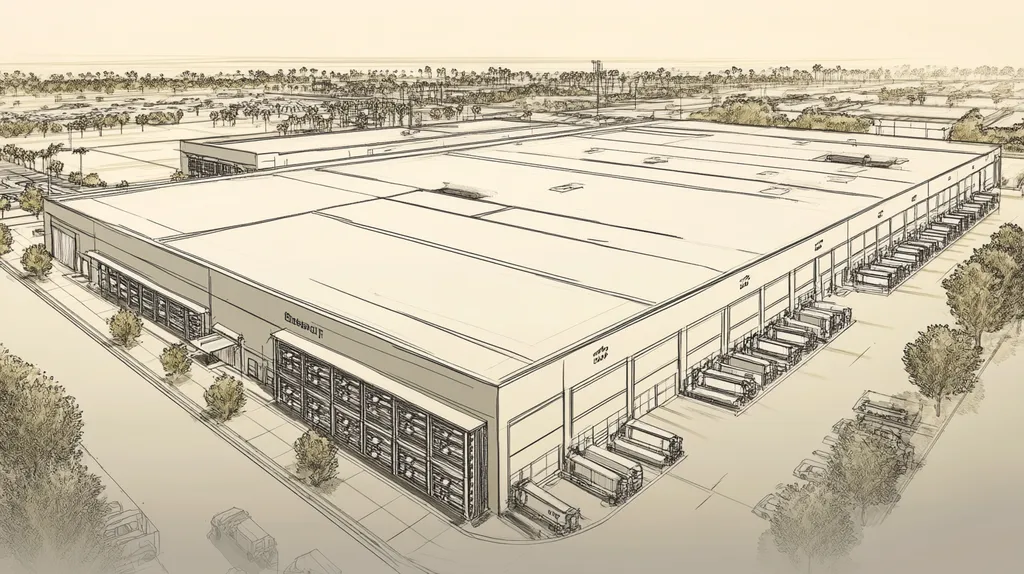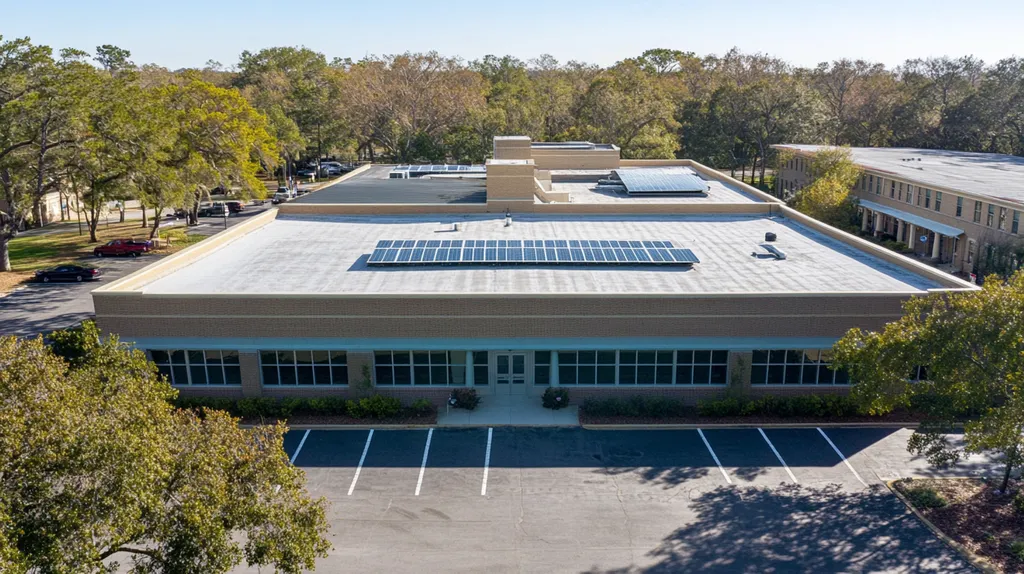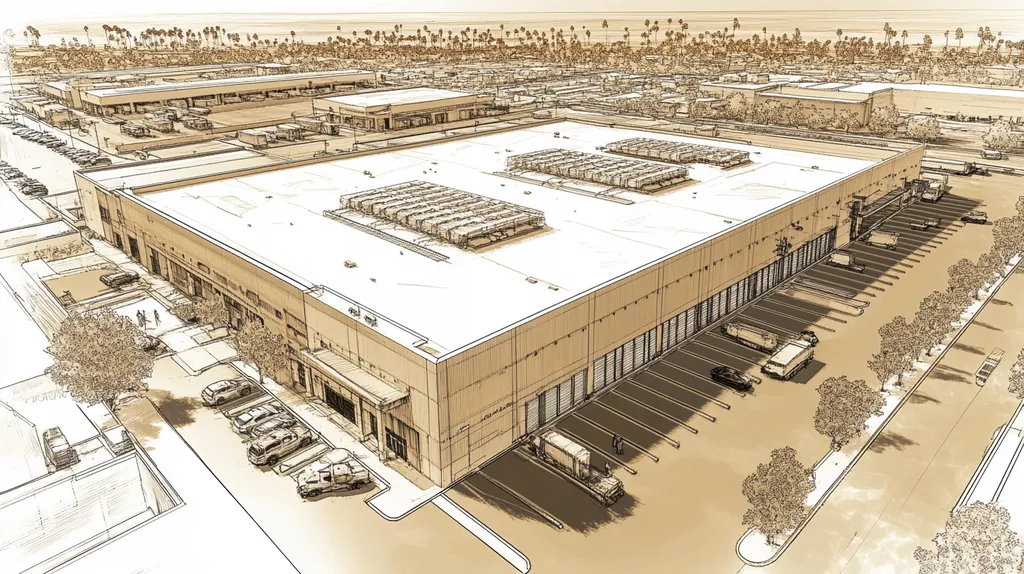Industrial roof coating failures cost commercial property owners millions annually, with over 70% of premature coating breakdowns stemming from improper application techniques. These preventable failures lead to extensive damage, increased energy costs, and shortened roof lifespans.
Many building owners operate under dangerous misconceptions about the coating application process, leading to costly mistakes and compromised building integrity.
This article examines common myths surrounding industrial roof coatings, provides evidence-based solutions, and outlines critical steps for ensuring proper application that maximizes roof protection and longevity.
SECTION 1: COMMON MISCONCEPTIONS
Many property owners and facility managers hold misconceptions about industrial roof coatings, which can lead to misguided maintenance decisions. These misunderstandings about how coatings work and the critical application processes can result in premature roof failures, costing businesses significantly in repairs and replacement. Understanding the actual role of coatings is essential for making informed choices that protect valuable assets.
Coatings Do Not Extend Roof Life
One prevalent belief is that simply applying a roof coating can automatically extend the lifespan of an existing roof. While coatings offer protection and can improve performance, they cannot fix underlying issues. An aging roof with existing structural weaknesses or leaks will not benefit significantly from a coating and may still experience failures.
For instance, if a roof suffers from hidden leaks or deterioration, a coating might conceal these problems instead of resolving them. Eventually, these underlying issues will resurface, potentially requiring costly interventions. Therefore, it is vital for property owners to assess and repair any foundational problems before considering a coating application.
Essentially, roof coatings serve as a protective layer rather than a solution for extending roof life. It is crucial to conduct proper inspections and repairs prior to applying any coating to maintain the roof’s long-term integrity.
No Maintenance is Required
Another common misconception is that once a roof coating is in place, it requires no further maintenance. This belief is misleading and can lead to significant consequences. Coatings need regular inspections and occasional touch-ups to maintain their protective capabilities. Without proper care, their effectiveness can wane over time.
For example, if debris accumulates on the roof or minor wear occurs, it may result in localized damage that undermines the coating’s performance. Neglecting routine maintenance can lead to severe issues such as leaks or increased energy costs. Implementing regular evaluations allows property owners to address potential problems before they escalate into major repairs.
In summary, coatings should be integrated into an ongoing roof maintenance strategy, rather than being viewed as a one-time fix. Establishing a proactive maintenance schedule is essential for maximizing the lifespan and protective qualities of coated roofs.
Any Contractor Can Apply Coatings
Many property owners mistakenly assume that any roofing contractor can effectively apply roof coatings. However, the application process requires specialized training and knowledge to ensure proper adhesion and durability. Selecting an inexperienced contractor can lead to subpar application and premature failures.
Different types of coatings necessitate unique application techniques and materials. For example, a silicone coating involves different methods compared to an acrylic one. Failure to follow the specific guidelines can lead to delamination or peeling. It is essential to hire a qualified contractor who is well-versed in the nuances of various coatings for optimal results.
A reputable contractor will also conduct a comprehensive assessment of the roof prior to application, evaluating whether the substrate is suitable for coating. Property owners should prioritize hiring skilled professionals to ensure the correct installation of roofing systems, thereby safeguarding their investment in the long run.
SECTION 2: PRACTICAL IMPLICATIONS
The proper application of industrial roof coatings goes beyond mere aesthetics; it is essential for preserving the structural integrity of commercial buildings. Failure to adhere to the correct application process can result in early roof failure, soaring energy expenses, and enhanced safety risks. Research suggests that misapplied coatings could shorten a roof’s lifespan by as much as 50%. Grasping the full implications of these coatings is crucial for property owners determined to safeguard their investments.
Impact on Roof Durability
The success of industrial roof coatings heavily relies on the application method. When applied correctly, a coating serves as a robust barrier against moisture and harmful UV rays, notably extending a roof’s lifespan. For example, well-applied acrylic coatings can prolong a roof’s longevity by up to 20 years.
On the flip side, poor application techniques can lead to issues like cracking, peeling, and blistering. Such defects not only incur hefty repair costs but also expose the underlying roofing material to adverse weather conditions. Statistics indicate that nearly 30% of roofs suffer premature failure due to inadequate coating applications.
The choice of materials and proper application temperature are vital for ensuring effective adhesion. Inadequate surface preparation or failure to monitor environmental conditions can prevent the coating from bonding properly, increasing the risk of leaks and subsequent damage.
Ultimately, enlisting professionals who adhere to manufacturer guidelines is key to enhancing the roof’s durability and ensuring its long-term performance.
Effects on Energy Efficiency
Industrial roof coatings significantly contribute to a building’s energy efficiency. Reflective coatings, for example, can mitigate roof temperatures and reduce air conditioning costs by limiting heat absorption. Research shows that cool roofing systems can lower energy expenses by as much as 30% in warmer climates.
However, if coatings are applied incorrectly, their reflective capabilities may be compromised, leading to higher energy consumption. Consequently, building owners may experience inflated utility bills and an increased workload on HVAC systems.
Additionally, the right application can help achieve sustainability objectives. Energy-efficient roofs play a role in urban heat management and are increasingly vital as cities introduce stricter regulations aimed at reducing environmental impacts.
In conclusion, the method of applying roof coatings directly influences energy efficiency, resulting in either significant cost savings or unnecessary expenses based on execution.
Consequences of Improper Application
Failing to apply industrial roof coatings correctly can lead to serious problems beyond superficial cosmetic issues. One major risk is water infiltration, which can result in substantial interior damage and mold growth, posing health hazards for building occupants.
Additionally, the risks of increased liability can escalate. For owners of warehouses and factories, a poorly maintained roof can heighten risks during severe weather, leading to dangerous situations and potential legal repercussions.
Thorough cleaning and preparing the roof surface is imperative. If debris or moisture remains, it can hinder proper coating adhesion. Omitting these crucial preparation steps can result in coating failures that necessitate expensive reapplications and exacerbate financial challenges for property owners.
Recognizing the severe consequences of improper application underscores the importance of hiring qualified professionals who follow best practices. Neglecting this can jeopardize not only the roof’s function but also the overall operation of the facility.
SECTION 3: COST OF MISINFORMATION
Misinformation surrounding industrial roof coatings can lead to significant financial setbacks for building owners. Studies reveal that 70% of roof failures are linked to improper application or incorrect product choices. This startling statistic emphasizes the critical importance of understanding the risks associated with common misconceptions. Acknowledging the true costs of these errors is vital for making informed decisions that protect both finances and assets. The following subsections will delve into the long-term financial implications, increased maintenance requirements, and the potential loss of energy efficiency associated with these misguided beliefs.
Financial Consequences of Premature Failure
When industrial roofs fail prematurely, the financial repercussions can be staggering. Incorrect application techniques can reduce the lifespan of roof coatings from the expected 15 to 20 years to just a few years. This not only leads to unexpected replacement costs but also strains the building’s operational budget.
Misunderstandings regarding product specifications, such as necessary thickness and adhesion, can worsen the situation, resulting in leaks and extensive structural damage. Repairing the aftermath of a failed roofing system can range from thousands to tens of thousands of dollars, severely impacting property value and resale potential.
Moreover, frequently replacing roofing systems contributes to environmental waste, contradicting the industry’s increasing focus on sustainability. Property owners must choose appropriate and properly applied roofing solutions to mitigate these risks, as the implications are far-reaching.
Recognizing the value of accurate information and professional expertise is essential to minimizing financial risks. Investing upfront in quality materials and proper techniques is a smarter choice than facing the costs associated with premature roof failure.
Increased Maintenance and Repair Costs
Misinformation can complicate roof maintenance considerably. Decisions made based on myths can lead to unexpected maintenance challenges that accumulate over time. For instance, a poorly applied coating may necessitate frequent touch-ups or repairs, diverting funds from essential projects.
Building owners may soon find themselves facing unanticipated repair expenses. Routine maintenance, typically a manageable cost, can escalate due to shortcuts taken during the coating application, resulting in larger repair issues down the line. Some estimates suggest that maintenance costs can increase by as much as 50% when misinformation compromises the roofing system’s integrity.
Additionally, ongoing expenses for monitoring roof conditions can rise if the initial work does not prove durable. Investing resources in reactive maintenance detracts from overall operational efficiency, particularly for businesses where roof performance is crucial for functionality and safety.
The key to addressing these challenges lies in seeking expert consultations and accurate product recommendations. Prioritizing informed decisions about coating applications can help significantly lower future maintenance costs.
Loss of Energy Efficiency Benefits
Energy efficiency is a top priority for building owners, yet misinformation on roof coatings can erase potential savings. When correctly applied, coatings can reflect sunlight and decrease cooling costs during the hot season. However, if a roof fails prematurely, expected energy savings vanish.
A failing roofing system can compromise insulation, driving indoor temperatures and increasing energy consumption. Many building owners do not realize that subpar roofing can lead to wasted energy and inflated utility bills. The initial savings from a low-cost coating can quickly be eclipsed by rising energy expenses.
Furthermore, overlooking how application errors impact energy efficiency can tarnish a property’s sustainability reputation. As consumers increasingly prioritize eco-friendly practices, diminished occupancy rates can lead to increased operational costs.
Thus, it is imperative for facility managers and property owners to seek established, proven roof coating solutions. An informed approach not only safeguards the roofing system but also optimizes energy efficiency and reduces overall operational expenses.
SECTION 4: REALITY CHECK
The application process for industrial roof coatings is a decisive factor in their success and longevity. Neglecting proper mixing and application techniques can result in costly failures and the premature need for roof replacement. Industry studies show that up to 40% of roofing issues arise from improper installation practices. This section will delve into effective mixing and application techniques, the vital importance of manufacturer specifications, and the crucial role of regular maintenance to ensure optimal performance.
Proper Mixing and Application Techniques
Effective roof coatings are contingent upon correct mixing and application. An improperly mixed coating can lose its protective capabilities, leaving the roof vulnerable to damage from UV rays and moisture. Inconsistent application can create weak spots that lead to leaks and other debilitating issues.
Following guidelines for mixing ratios of components, such as binders and solvents, is essential. Adhering to these ratios ensures a strong bond forms between the coating and the existing roof surface. Additionally, using the appropriate tools and techniques during application enhances both coverage and adhesion.
Whether spraying, rolling, or brushing, each method demands careful execution to achieve a uniform layer. Quality application can significantly prolong the life span of the roof coating, ultimately minimizing frequent and costly repairs.
For optimal results, property owners should collaborate with trained professionals who have a proven history of successful coating applications.
Importance of Manufacturer Specifications
Adhering to manufacturer specifications is critical for successful coating application. These specifications include detailed guidelines about product preparation, application temperatures, and curing durations. Deviating from these parameters can lead to subpar results and compromise the coating’s durability.
For example, applying a coating in excessively low temperatures can impede the curing process, creating soft spots that are not resilient against environmental elements. Conversely, applying under high temperatures may lead to rapid evaporation, undermining the coating’s effectiveness.
Choosing materials that align with the manufacturer’s recommendations for the existing roof type—be it metal, membrane, or another substrate—is essential for long-term compatibility and success.
Ignoring these critical guidelines can void warranties and invite liability issues. Therefore, understanding and implementing manufacturer specifications is vital for a high-quality, enduring roof coating solution.
Role of Regular Maintenance
Regular maintenance is indispensable for prolonging the life of industrial roof coatings. Just like any other component of a building, roof coatings require periodic inspections and maintenance to catch minor issues before they escalate. Research indicates that a proactive maintenance schedule can extend a roof’s lifespan by up to 50%.
Routine inspections should focus on assessing the coating’s integrity, identifying signs of wear such as cracking, peeling, or discoloration. Early intervention can prevent costly repairs and preserve the overall performance of the roof.
Seasonal cleaning is also crucial. The buildup of debris, algae, or dirt can degrade coatings and undermine their effectiveness. By implementing a seasonal cleaning regimen, property owners can help maintain the coating’s defensive barrier against environmental stressors.
Partnering with maintenance professionals who understand the specific needs of industrial roofing systems will ensure the longevity of the investment and protect against unexpected costs.
SECTION 5: EVIDENCE-BASED ALTERNATIVES
The choice to apply industrial roof coatings is a pivotal moment for ensuring the durability and effectiveness of commercial roofs. Statistics reveal that poorly maintained roofs can lead to increased energy costs and hefty repair bills, making it imperative for property owners to scrutinize proven application methods. A firm grasp of science-backed data on these coatings can significantly enhance decision-making. This section will explore validated application methods, performance metrics, and case studies demonstrating the success of industrial roof coatings.
Verified Application Methods and Tools
The success of an industrial roof coating project hinges on employing the right application methods. Research underscores the importance of proper surface preparation; using cleaning tools such as pressure washers and scrub brushes effectively removes contaminants, which is crucial for optimal adhesion of coatings.
Additionally, the type of application equipment used is vital. Spray systems, rollers, and brushes each have distinct advantages. For instance, spray applications allow for rapid, even coverage, while rollers offer greater control for detailed work.
Monitoring weather conditions is also critical. Ideal temperatures and humidity levels significantly enhance the adhesion and curing of the coating. Adhering to manufacturer specifications is key to achieving the best results.
Investing in quality tools and following verified methods sets a strong foundation for long-lasting roof coatings. Ignoring these components can lead to premature failures, resulting in wasted time and financial resources.
Performance Data from Successful Coatings
Performance metrics from various studies highlight that contemporary roof coatings can greatly improve roof lifespan and energy efficiency. For instance, a significant industry report indicated that reflective coatings could reduce rooftop temperatures by as much as 20 degrees Fahrenheit.
In another study, buildings utilizing high-performance coatings experienced a 30% reduction in energy costs. These coatings efficiently reflect solar radiation, minimizing heat absorption and cooling needs.
Moreover, coatings exhibiting superior adhesion strength have been shown to endure more extreme weather conditions, thereby extending the roof’s lifecycle. Consistent reporting reveals that facilities employing these advanced coatings see remarkable decreases in maintenance and repair costs.
This performance data emphasizes the necessity of considering advanced technology when selecting roof coatings. Failing to adopt these evidence-based solutions risks incurring higher costs and creating inefficiencies for property owners.
Case Studies of Effective Coating Projects
Several practical case studies showcase the benefits of industrial roof coatings. One significant project involved a manufacturing facility burdened with persistent leaks and high energy expenses. After the application of an advanced silicone coating, the facility saw a 40% reduction in energy costs and effectively eliminated leaks.
Another case study documented a distribution center’s transition to a reflective coating, resulting in a 25% decrease in roof surface temperatures. This improvement enhanced indoor comfort and reduced cooling demands significantly.
These examples illustrate that effective industrial roof coatings can lead to substantial savings and operational advantages. Each case supports the evidence favoring advanced coating technologies and their practical applications.
Utilizing evidence-based alternatives not only enhances functionality but also boosts the overall value of the property. The insights drawn from these projects can serve as a guide for other commercial property owners in making well-informed roofing decisions.
SECTION 6: TEST AND VERIFY
Investing in industrial roof coatings entails significant financial stakes. Industry studies indicate that improper application contributes to nearly 30% of roofing issues, leading to costly repairs that can reach thousands of dollars. Adherence to manufacturer guidelines, rigorous testing protocols, and contractor credential verification are crucial for securing a durable roofing solution. This section will outline the essential verification steps that protect investments in roof coatings.
Manufacturer Recommendations and Guidelines
Each manufacturer supplies detailed guidelines for their roof coating products. These instructions specify necessary application procedures, ideal environmental conditions, and material compatibility. Following these recommendations is essential for optimizing the performance and durability of the roofing system.
Disregarding these specifications can result in a variety of issues, including peeling and inadequate adhesion. For example, applying a coating outside the recommended temperature range can severely diminish its effectiveness, leading to premature failure.
Furthermore, property owners should also review the manufacturer’s maintenance and repair instructions. Regular inspections can catch minor issues early, preventing them from escalating into extensive repairs and saving valuable resources over time.
Failure to follow these guidelines not only jeopardizes the roof’s effectiveness but can also void any warranties provided by the manufacturer. Hence, understanding and strictly adhering to manufacturer instructions is vital for optimal roofing outcomes.
Testing for Compliance with Standards
Testing coatings for compliance with industry standards assesses their performance under various stress conditions. Several organizations establish these standards to ensure that products are both effective and safe for use.
Critical testing includes evaluations of moisture intrusion, thermal performance, and durability. These assessments reveal how well coatings withstand environmental elements such as UV exposure, moisture, and mechanical wear.
Conducting compliance tests not only confirms product reliability but also identifies potential weaknesses that might lead to issues later, such as leaks or poor insulation performance.
Ultimately, selecting coatings that meet or exceed industry standards enhances the reliability of the roofing solution, making compliance testing a vital step for property owners to mitigate risks and protect their investments.
Verification of Contractor Credentials
The expertise of the contractors applying industrial roof coatings is crucial to the project’s success. It is essential for property owners to verify the contractors’ credentials, including their licenses and certifications.
Reputable contractors typically hold industry certifications that demonstrate their commitment to best practices. These credentials indicate their familiarity with specific manufacturer guidelines and experience working with various roofing materials.
Additionally, checking references and reviewing past projects can shed light on a contractor’s reliability and craftsmanship. Property owners should inquire about experience with roofs similar to their own to evaluate the contractor’s capability to meet their needs.
Failing to verify contractors’ qualifications can lead to poor workmanship, excessive costs, and a greater risk of roofing failures. Ensuring contractors are properly credentialed is as crucial as selecting the right coating material.
The Bottom Line
Industrial roof coating failures cost commercial property owners over $300 million annually in the United States alone, with 70% of these failures directly attributable to improper application techniques.
The evidence demonstrates that successful coating applications require strict adherence to manufacturer specifications, proper surface preparation, and installation by qualified contractors.
Building owners who ignore these critical factors face premature roof failures, increased energy costs, and potential structural damage that can amount to hundreds of thousands in repairs.
Moving forward, facility managers must prioritize proper application processes, regular maintenance protocols, and contractor verification to protect their roofing investments and ensure optimal performance.
The stakes are simply too high to risk cutting corners on industrial roof coating applications.
FREQUENTLY ASKED QUESTIONS
Q. Do industrial roof coatings extend the lifespan of a commercial roof?
A. While coatings offer protection, they do not extend a roof’s lifespan on their own. Underlying structural issues should be addressed before applying coatings to ensure lasting effectiveness.
Q. What maintenance is needed for industrial roof coatings?
A. Regular inspections and occasional touch-ups are essential for maintaining roof coatings. Neglecting maintenance can lead to reduced effectiveness and costly repairs over time.
Q. Can any contractor apply coatings to a commercial roof?
A. Not every contractor has the requisite skills for properly applying roof coatings. It’s vital to choose qualified professionals familiar with specific coating types and application techniques.
Q. How does improper application affect industrial roof durability?
A. Poor application can lead to cracks, peeling, and premature roof failures. These issues expose underlying materials and significantly diminish a roof’s durability and lifespan.
Q. What are the financial implications of incorrect roof coating applications?
A. Misapplication can lead to early failures requiring costly repairs or replacements, impacting operational budgets. Understanding correct application can save property owners from significant future expenses.
Q. Why are manufacturer specifications crucial for coating applications?
A. Following manufacturer specifications ensures optimal performance and durability of coatings. Deviating may lead to application failures and voided warranties, undermining your investment.
Q. What should I verify before hiring a contractor for roof coatings?
A. Verify the contractor’s licenses, certifications, and past project references. Ensure they have experience with coatings similar to your roof type for successful results.


